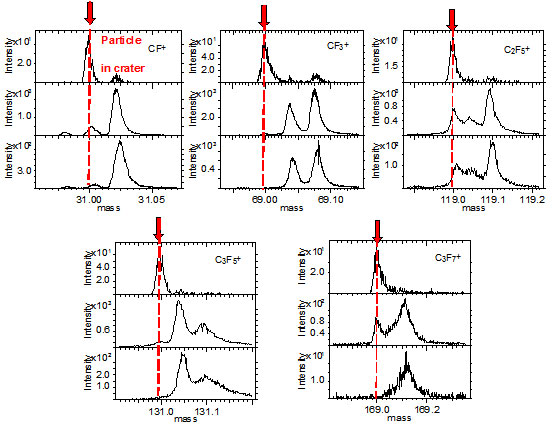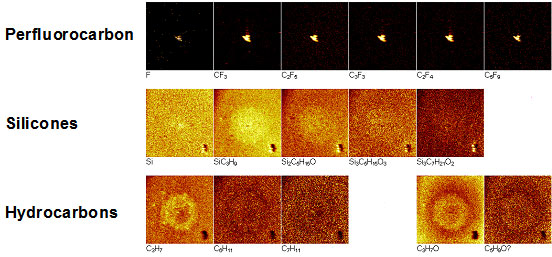Request for analysis:
Multiple crater defects were occurring on painted car panels.
Objectives:
Methodology:
Time of flight secondary ion mass spectroscopy (ToF-SIMS) was used to determine if any contamination was responsible for the crater defects. The instrument used in this work was an ION-TOF (GmbH), ToF-SIMS IV with an upgraded, state-of-the-art, Bismuth Liquid Metal Ion Source (LMIG). This technique is extremely surface sensitive and probes the outer 1-3 monolayers of the surface. The detection limits are in the range of ppb-ppm, depending upon the element or species of interest. ToF-SIMS is not quantitative without the use of appropriate standards; however, meaningful relative comparisons can be made between similar samples using normalized peak intensities and peak ratios.
Results of the study:
The ToF-SIMS analysis identified a perfluorocarbon species associated with a particle at the centre of the crater defect. The ToF-SIMS spectra presented in Figure 1 show the characteristic CxFy species that are typically found with a perfluorocarbon.
The positive ion images presented in Figure 2 show the perfluorocarbon species associated with the particle. The images also show that silicone species are present in the crater and a ring at the edge of the crater shows that hydrocarbons are present.
Based on the ToF-SIMS results, a perfluorocarbon particle, such as Teflon®, is located at the centre of the crater. In addition, silicone and hydrocarbon species were detected in the crater, possibly from oils or lubricants.

Figure 1: ToF-SIMS spectra showing characteristic perfluorocarbon species CxFy associated with a particle contaminant at the centre of a carter defect.

Figure 2: Positive secondary ion images showing distribution of perfluorocarbon, silicone and hydrocarbon species associated with the crater defect.

